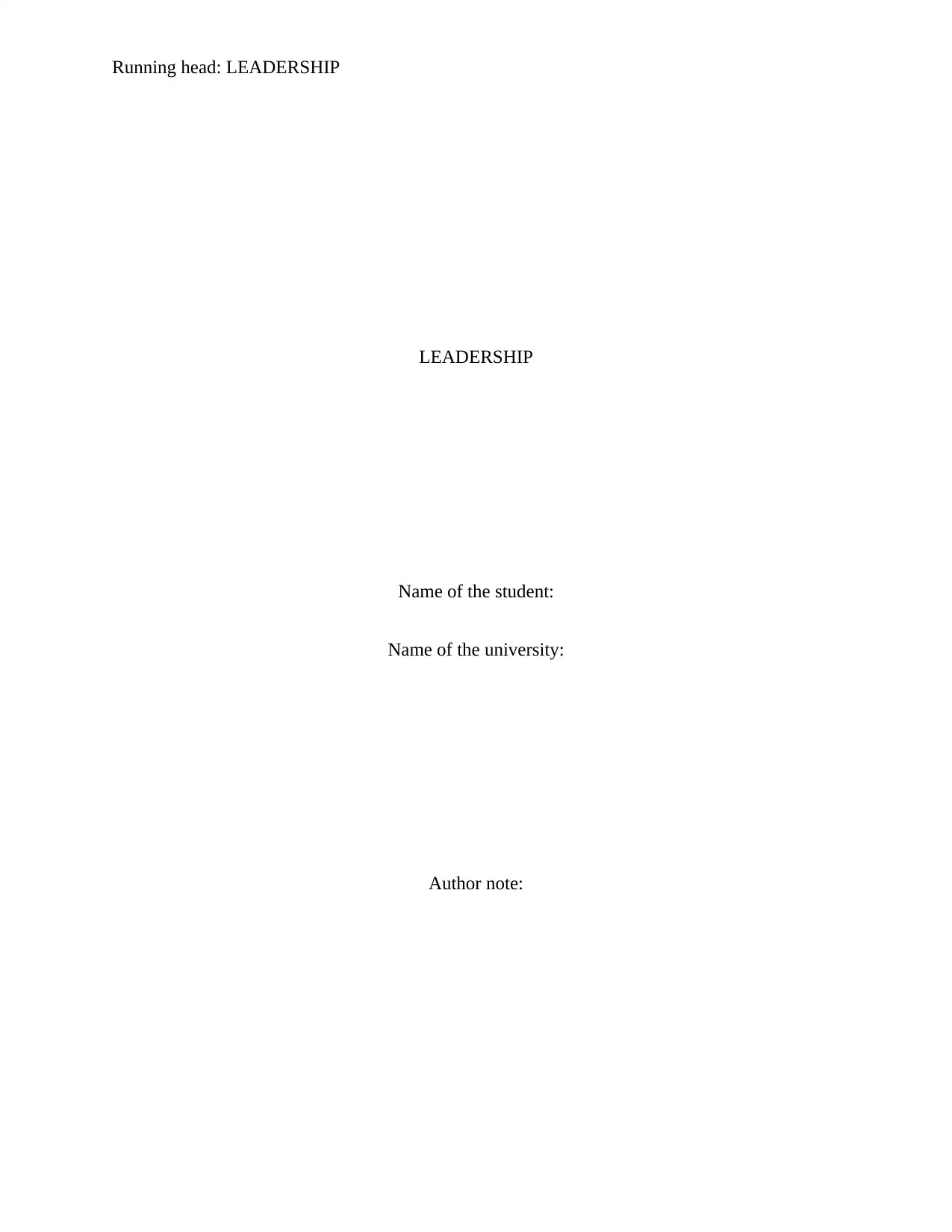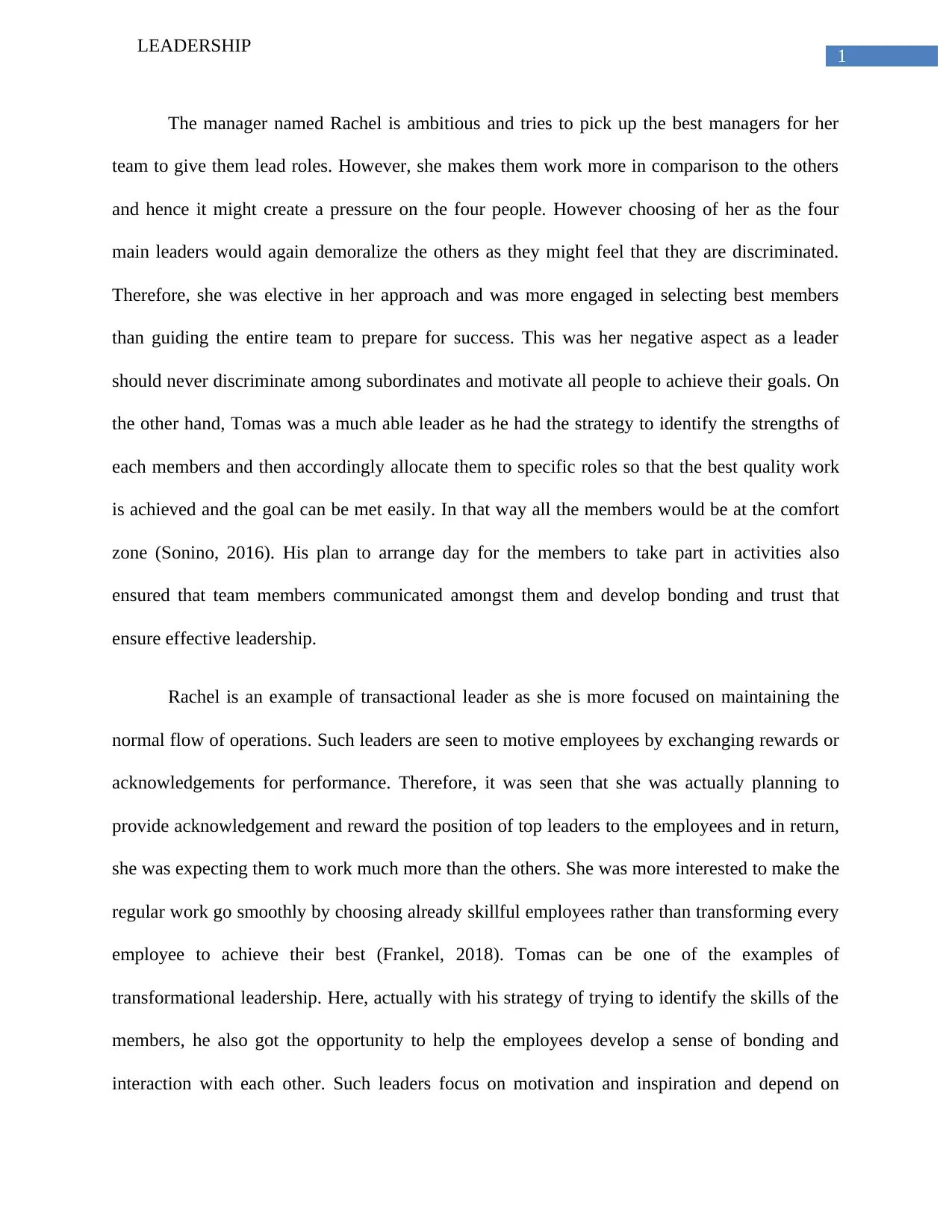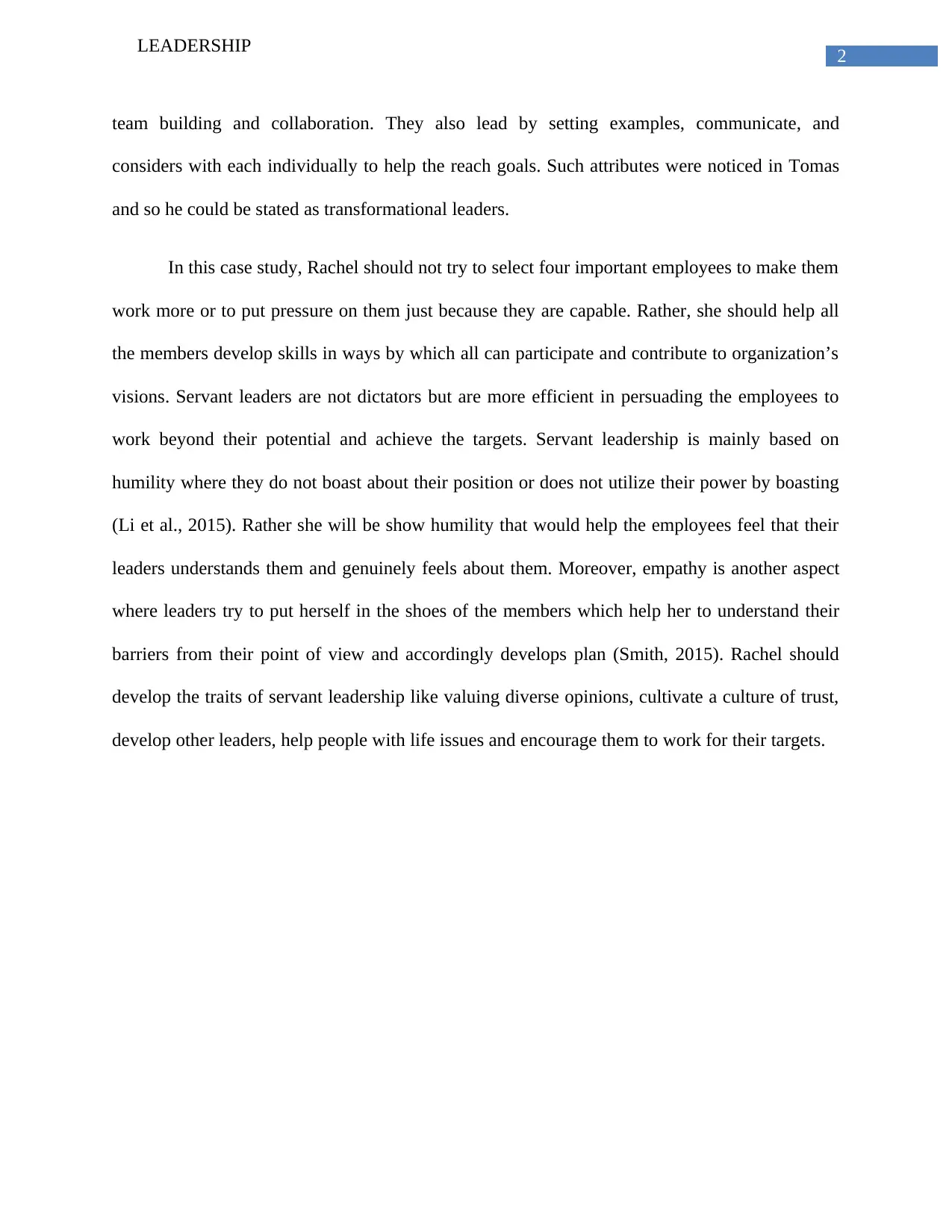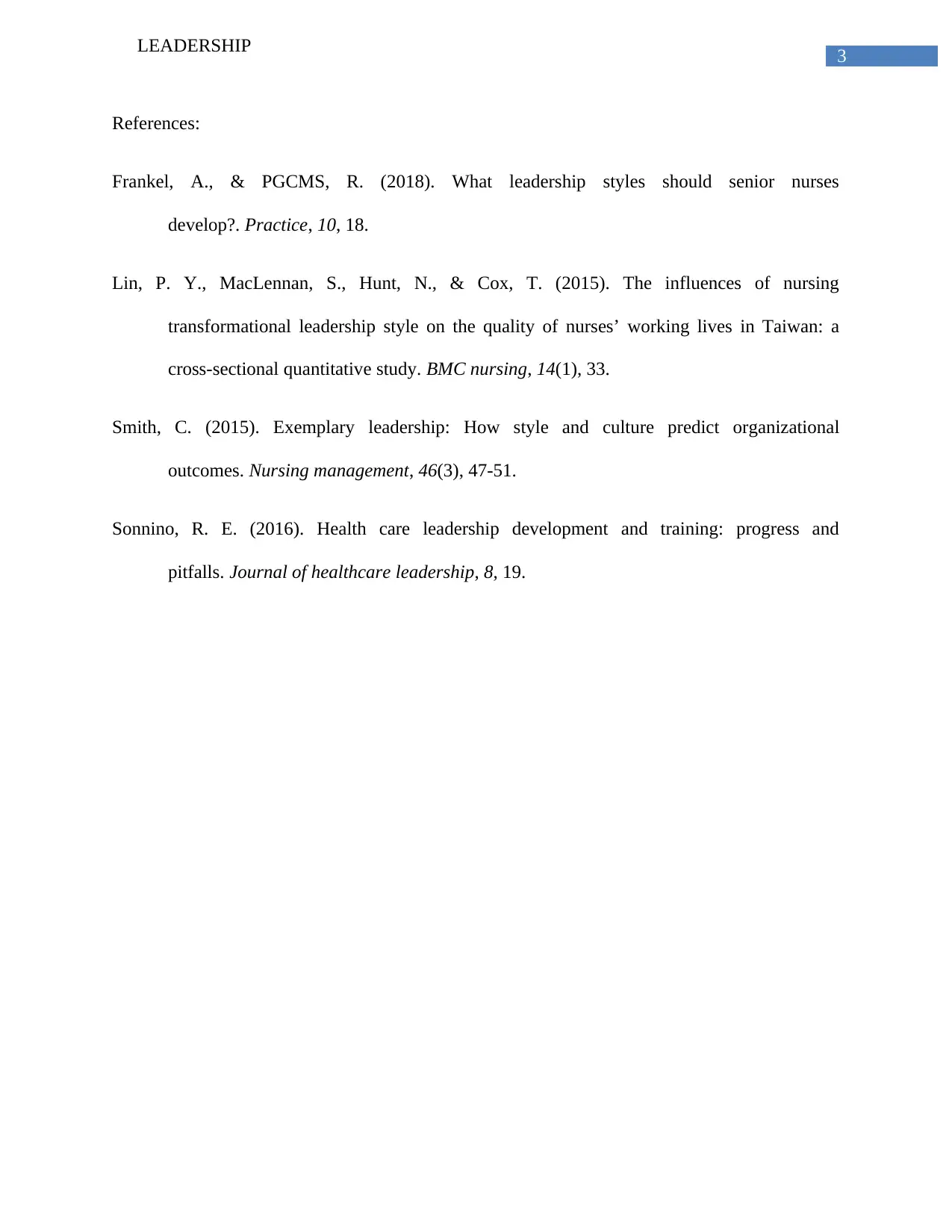Analyzing Leadership Styles in a Workplace Case Study
VerifiedAdded on 2023/06/10
|4
|790
|370
Case Study
AI Summary
This case study analyzes two leadership styles, contrasting Rachel's transactional approach with Tomas's transformational leadership. Rachel, an ambitious manager, is criticized for favoring a select few, potentially demotivating others and demonstrating a lack of inclusivity. Her focus on rewarding top performers exemplifies transactional leadership, prioritizing smooth operations over employee development. Conversely, Tomas, a transformational leader, identifies individual strengths and fosters team cohesion through activities, leading by example and inspiring collaboration. The study suggests that Rachel should adopt servant leadership principles, valuing diverse opinions, building trust, and empowering all team members to contribute to organizational goals. The document references various sources to support the analysis of different leadership styles, emphasizing the importance of empathy and humility in effective leadership.
1 out of 4











![[object Object]](/_next/static/media/star-bottom.7253800d.svg)